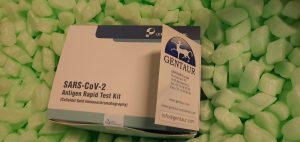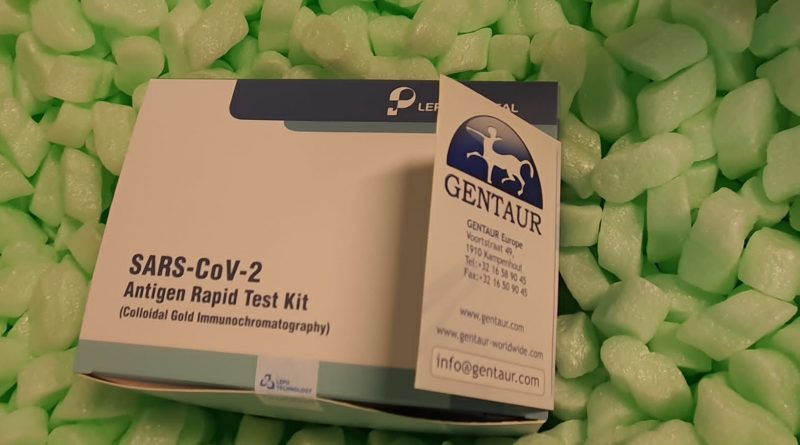Reagentless biomolecular analysis using a molecular pendulum
The improvement of reagentless sensors that may detect molecular analytes in organic fluids might allow a broad vary of functions in customized well being monitoring. However, solely a restricted set of molecular inputs can at present be detected using reagentless sensors. Here, we report a sensing mechanism that’s appropriate with the analysis of proteins which might be vital physiological markers of stress, allergy, cardiovascular well being, irritation and most cancers. The sensing methodology relies on the movement of an inverted molecular pendulum that reveals field-induced transport modulated by the presence of a sure analyte. We measure the sensor’s electrical field-mediated transport using the electron-transfer kinetics of an connected reporter molecule.
Using time-resolved electrochemical measurements that allow unidirectional movement of our sensor, the presence of an analyte sure to our sensor advanced could be tracked constantly in actual time. We present that this sensing strategy is appropriate with making measurements in blood, saliva, urine, tears and sweat and that the sensors can accumulate information in situ in dwelling animals. Biological ion channels are basic to sustaining life. In this manuscript we apply our not too long ago developed statistical and linear response concept to research Na+ conduction by way of the prokaryotic Na+ channel NaChBac.
This work is prolonged theoretically by the derivation of ionic conductivity and present in an electrochemical gradient, thus enabling us to check to a vary of whole-cell information units carried out on this channel. Furthermore, we additionally evaluate the magnitudes of the currents and populations at every binding website to beforehand revealed single-channel recordings and molecular dynamics simulations respectively. In doing so, we discover glorious settlement between concept and information, with predicted vitality boundaries at every of the 4 binding websites of ∼4,2.9,3.6, and 4kT.
In this examine, we recognized 86 poplar bZIP transcription elements and described their conserved domains. According to the outcomes of phylogenetic tree, we divided these members into 12 teams with particular gene constructions and motif compositions. The corresponding genes that harbor a massive variety of segmental duplication occasions are inconsistently distributed on the 17 poplar chromosomes. In addition, we additional examined collinearity between these genes and the associated genes from six different species. Evidence from transcriptomic information indicated that the bZIP genes in poplar displayed completely different expression patterns in roots, stems, and leaves. Furthermore, we recognized 45 bZIP genes that reply to salt stress within the three tissues.
Combined NMR and Computational Study of Cysteine Oxidation throughout Nucleation of Metallic Clusters in Biological Systems
The widespread biomedical functions of silver and gold nanoparticles (AgNPs and AuNPs, respectively) immediate the necessity for mechanistic analysis of their interplay with biomolecules. In organic media, metallic NPs are identified to rework by varied pathways, particularly within the presence of thiols. The interaction between metallic NPs and thiols could result in unpredictable penalties for the well being standing of an organism. This examine explored the potential occasions occurring throughout biotransformation, dissolution, and reformation of NPs within the thiol-rich organic media.
The examine employed a mannequin system evaluating the interplay of cysteine with small-sized AgNPs and AuNPs. The interaction of cysteine on transformation and reformation pathways of those NPs was experimentally investigated by nuclear magnetic resonance (NMR) spectroscopy and supported by gentle scattering strategies and transmission electron microscopy (TEM). As the primary consequence, Ag- or Au-catalyzed oxidation of cysteine to cystine was discovered to happen by way of technology of reactive oxygen species (ROS). Computational simulations confirmed this mechanism and the function of ROS within the oxidative dimerization of biothiol throughout NPs reformation.
The obtained outcomes symbolize beneficial mechanistic information in regards to the advanced occasions in the course of the transport of metallic NPs in thiol-rich organic techniques that ought to be thought-about for the long run biomedical functions of metal-based nanomaterials. We carried out co-expression analysis on the consultant genes, adopted by gene set enrichment analysis. The outcomes demonstrated that tissue differentially expressed genes, particularly the co-expressing genes, are primarily concerned in secondary metabolic and secondary metabolite biosynthetic processes. However, salt stress responsive genes and their co-expressing genes primarily take part within the regulation of metallic ion transport, and methionine biosynthetic.

Stopped-flow Light Scattering Analysis of Red Blood Cell Glycerol Permeability
Stopped-Flow Light Scattering (SFLS) is a methodology devised to research the kinetics of quick chemical reactions that end in a vital change of the common molecular weight and/or within the form of the response substrates. Several modifications of the unique stopped-flow system have been made resulting in a vital extension of its technical functions. One of those modifications permits the biophysical characterization of the water and solute permeability of organic and synthetic membranes. Here, we describe a protocol of SFLS to measure the glycerol permeability of remoted human pink blood cells (RBCs) and consider the pharmacokinetics properties (selectivity and efficiency) of isoform-specific inhibitors of AQP3
AQP7 and AQP9, three mammalian aquaglyceroporins permitting transport of glycerol throughout membranes. Suspensions of RBCs (1% hematocrit) are uncovered to an inwardly directed gradient of 100 mM glycerol in a SFLS equipment at 20 °C and the ensuing adjustments in scattered gentle depth are recorded at a monochromatic wavelength of 530 nm for 120 s. The SFLS equipment is ready as much as have a useless time of 1.6-ms and 99% mixing effectivity in lower than 1 ms. Data are fitted to a single exponential perform and the associated time fixed (τ, seconds) of the cell-swelling section of sunshine scattering similar to the osmotic motion of water that accompanies the entry of glycerol into erythrocytes is measured.
[Linking template=”default” type=”products” search=”Fraction V Microbiological grade BSA powder” header=”2″ limit=”142″ start=”2″ showCatalogNumber=”true” showSize=”true” showSupplier=”true” showPrice=”true” showDescription=”true” showAdditionalInformation=”true” showImage=”true” showSchemaMarkup=”true” imageWidth=”” imageHeight=””]
The coefficient of glycerol permeability ( Pgly , cm/s) of RBCs is calculated with the next equation: Pgly = 1/[(S/V)τ] the place τ (s) is the fitted exponential time fixed and S/V is the surface-to-volume ratio (cm-1) of the analyzed RBC specimen. Pharmacokinetics of the isoform-specific inhibitors of AQP3, AQP7 and AQP9 are assessed by evaluating the extent of RBC Pgly values ensuing after the publicity to serial concentrations of the blockers.

